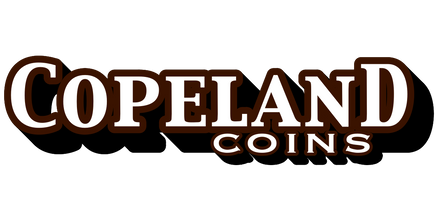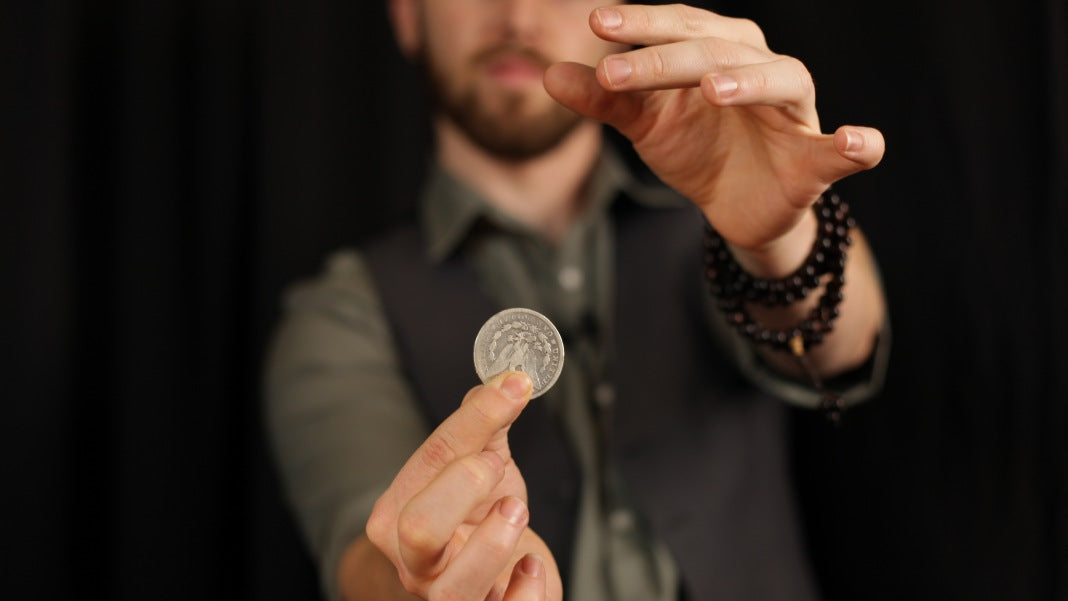What can coin magicians learn from figure skating?
<<< previous post 2-minute read
Our Sunday email may not have included the correct link.
Matthew Syed is one of those annoyingly talented people. He’s had two vastly different careers and has been wildly successful in both - showoff.
First, he took a childhood game far too seriously and became the UK's number-one table tennis player for 10 years. Then, he put down the paddle and wrote six bestselling books - obviously.
His first and most famous book is called Bounce. Like a weird episode of Scooby-Doo,* it rips the mask off the idea of ‘talent’ and shows it for what it is: thousands of hours of purposeful practice. I know, disappointing.
According to Syed, ‘purposeful practice is about striving for what is just out of reach and not quite making it.’
It seems simple, but it makes a big difference in learning. This is demonstrated by research done into figure skating - that sport where people strap blades to their feet and do their best impression of a spinning top. The researchers found that what sets elite skaters apart isn’t genetics or being vaguely related to a dreidel, it’s that they regularly attempt jumps outside their current capabilities.
Syed shows that this approach is common in many top performers and says, ‘world-class performance comes by striving for a target just out of reach, but with a vivid awareness of how the gap might be breached. Over time, through constant repetition and deep concentration, the gap will disappear, only for a new target to be created, just out of reach once again.’
This idea changed the way I practice magic. I used to fear complicated coin tricks, but now I run towards them and give them a belly scratch. This has improved my ‘chops’ to no end. And I now try to look at a difficult trick/move as an adventure - like Mount Everest for the hands.
It also makes me seek out performance situations that I’m not good at yet, in the hopes that I can learn, grow and become a well-rounded magician.
Do you avoid hard tricks or get excited by them? What’s the hardest trick you’ve tried to learn? What’s your approach to practice?
Leave a comment, it’s great to hear from you!
*For you Non-English folks, Scooby-Doo is a children’s cartoon about teenagers and a talking dog who solve crimes that have been committed by masked villains. What a plot! At the end of each episode, they catch the villain and then rip off his mask to reveal he was actually the town sheriff, who everyone knows. Fun! Just like we just ripped off the mask to the secrets of advancing your magic. You know these answers and can now move forward in advanced magic.
Next post: https://www.copelandcoins.com/blogs/news/timeyourpractice











How To Recover Your Bitcoin Without Falling Victim To Scams: A Testimony Experience With Capital Crypto Recover Services, Contact Telegram: @Capitalcryptorecover
Dear Everyone,
I would like to take a moment to share my positive experience with Capital Crypto Recover Services. Initially, I was unsure if it would be possible to recover my stolen bitcoins. However, with their expertise and professionalism, I was able to fully recover my funds. Unfortunately, many individuals fall victim to scams in the cryptocurrency space, especially those involving fraudulent investment platforms. However, I advise caution, as not all recovery services are legitimate. I personally lost $273,000 worth of Bitcoin from my Binance account due to a deceptive platform. If you have suffered a similar loss, you may be considering crypto recovery, The Capital Crypto Recover is the most knowledgeable and effective Capital Crypto Recovery Services assisted me in recovering my stolen funds within 24 hours, after getting access to my wallet. Their service was not only prompt but also highly professional and effective, and many recovery services may not be trustworthy. Therefore, I highly recommend Capital Crypto Recover to you. i do always research and see reviews about their service, For assistance finding your misplaced cryptocurrency, get in touch with them, They do their jobs quickly and excellently, Stay safe and vigilant in the crypto world. Contact: Recoverycapital@fastservice.com You can reach them via email at Capitalcryptorecover@zohomail.com OR Call/Text Number +1 (336)390-6684 his contact website: https://recovercapital.wixsite.com/capital-crypto-rec-1
How To Recover Your Bitcoin Without Falling Victim To Scams: A Testimony Experience With Capital Crypto Recover Services, Contact Telegram: @Capitalcryptorecover
Dear Everyone,
I would like to take a moment to share my positive experience with Capital Crypto Recover Services. Initially, I was unsure if it would be possible to recover my stolen bitcoins. However, with their expertise and professionalism, I was able to fully recover my funds. Unfortunately, many individuals fall victim to scams in the cryptocurrency space, especially those involving fraudulent investment platforms. However, I advise caution, as not all recovery services are legitimate. I personally lost $273,000 worth of Bitcoin from my Binance account due to a deceptive platform. If you have suffered a similar loss, you may be considering crypto recovery, The Capital Crypto Recover is the most knowledgeable and effective Capital Crypto Recovery Services assisted me in recovering my stolen funds within 24 hours, after getting access to my wallet. Their service was not only prompt but also highly professional and effective, and many recovery services may not be trustworthy. Therefore, I highly recommend Capital Crypto Recover to you. i do always research and see reviews about their service, For assistance finding your misplaced cryptocurrency, get in touch with them, They do their jobs quickly and excellently, Stay safe and vigilant in the crypto world. Contact: Recoverycapital@fastservice.com You can reach them via email at Capitalcryptorecover@zohomail.com OR Call/Text Number +1 (336)390-6684 his contact website: https://recovercapital.wixsite.com/capital-crypto-rec-1
LEADS – FULLZ – PROS
USA/UK/CANADA DATABASE
-———————————————————-
Contact Information:
WhatsApp: +1 (605) 8461-870 | Tele-Gram: @ Fullzpros
📧 Datatrader3@gmail.com
-————————————————————
USA SSN FULLZ | UK NIN FULLZ | CANADA SIN FULLZ
SSN with DL Front Back & Selfie | USA Passports Photos
Fullz For USA UK CANADA SPAIN AUS Germany
DL Fullz with Issue & Expiry Date | Business Owner Leads
Payday & Loan Leads | First Hit Sweepstakes
Home Owner & Employee leads
USA Bank Leads | Dead Fullz
Phone Number Leads | Email Combos
Fullz With High Credit Score
Health & Medical leads
LinkedIn Leads | Mortgage Leads
B2B Leads | EIN Lookup
Cars Database With MRV
Children Fullz 2011-2024
Business EIN Company Pros
Bank Statement With W-2 Forms
Fullz for (FASFA|Uber|Doordash|SBA|PUA|UI)
-————————————————————
For More Information:
WhatsApp: +1 (605) 8461-870
Tele-Gram = @ Fullzpros
TG-Channel = t.me/bigdatatrader
VK ID= Fullzpros
I was recently scammed out of $53,000 by a fraudulent Bitcoin investment scheme, which added significant stress to my already difficult health issues, as I was also facing cancer surgery expenses. Desperate to recover my funds, I spent hours researching and consulting other victims, which led me to discover the excellent reputation of Capital Crypto Recover, I came across a Google post It was only after spending many hours researching and asking other victims for advice that I discovered Capital Crypto Recovery’s stellar reputation. I decided to contact them because of their successful recovery record and encouraging client testimonials. I had no idea that this would be the pivotal moment in my fight against cryptocurrency theft. Thanks to their expert team, I was able to recover my lost cryptocurrency back. The process was intricate, but Capital Crypto Recovery’s commitment to utilizing the latest technology ensured a successful outcome. I highly recommend their services to anyone who has fallen victim to cryptocurrency fraud. For assistance contact Recoverycapital@fastservice.com and on Telegram OR Call Number +1 (336)390-6684 via email: Capitalcryptorecover@zohomail.com you can visit his website: https://recovercapital.wixsite.com/capital-crypto-rec-1
I strongly advise using this very reputable Recovery Hacker101 for anyone looking to recover any type of crypto currencies assets from online frauds, Wallet hackers, or BTC transferred to the wrong address. After I lost a lot of money to those terrible con artists posing as recovery specialists, this recovery specialist was great in aiding me in getting my Bitcoin back. After I gave Recovery Hacker101 the relevant details and prerequisites, a total of 1.4170 BTC was eventually recovered. I was overjoyed that I had been able to recover this much after having lost even more to the problems I had dealt with before discovering Recovery Hacker101. So don’t hesitate to get in touch with recoveryhacker101 AT gmail com. if you find yourself in this scenario and need help recovering from an online bitcoin scam
Leave a comment